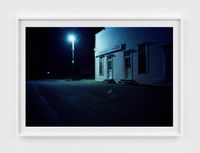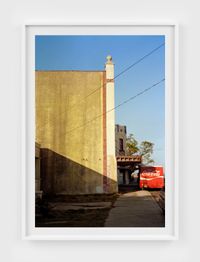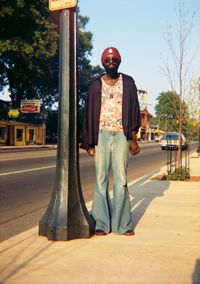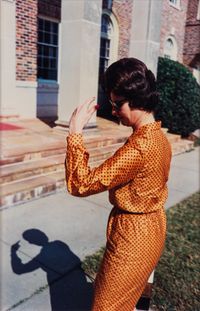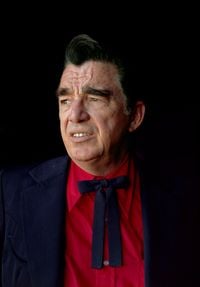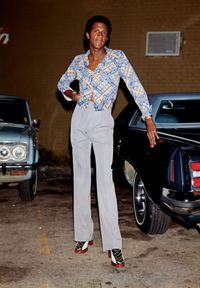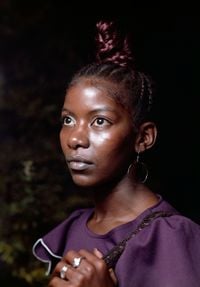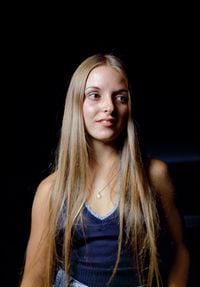William Eggleston is an American photographer famous for his pioneering use of colour at a time when black and white was the dominant method. His low-keyed images of ordinary household objects found inside or out within everyday settings have greatly influenced both contemporary art and popular culture.
Read MoreHe uses a commercial process of dye transfer so he can control the saturation intensity.
Born into a wealthy family who owned a cotton plantation on the Mississippi Delta, Eggleston attended several university courses unconnected with art production. It wasn't until the late 1950s, after a friend persuaded him to buy a camera because of his fascination with mass-produced mechanical devices like guns, that Eggleston began to take photographs.
Self-taught and admiring Walker Evans and Henri Cartier-Bresson, Eggleston first made hundreds of black-and-white snapshots, such as Untitled (1960—1965) and Untitled (1960—1972). In 1964, after shifting to Memphis, he began to experiment with colour and the commercial process of dye transfer.
In 1976 the Museum of Modern Art curator John Szarkowski invited Eggleston to present a series of his colour images, which launched his international career. Eggleston claims he is interested only in 'structure and composition' but his admirers obviously see a whole lot more, particularly in the area of social commentary.
William Eggleston's coloured photographs are particularly memorable because of their conceptual or political ambiguity.
Important works include Santa Monica (1974), Untitled 1969—70 (the artist's uncle, Adyn Schuyler Senior, with Jasper Staples, in Cassidy Bayou, Sumner, Mississippi) (1969—1970), Winston (1983—1986), Untitled (Memphis) (c.1969—1971), Untitled (c.1973), and Untitled (c.1983—1986). Many shock because of their 'banality', or apparently dull, commonplace ambience. Others amaze because of the intensity of their seductive colour, or the elegant positioning of the different elements.
Besides exploring a wide range of everyday still lifes, portraits, landscapes, and architectural interiors in his colour and black-and-white photographs, Eggleston has made a few videos, these enthused over by other photographers such as Juergen Teller.
Eggleston is an enthusiastic collector of cameras. The range of technologies available fascinate him.
Eggleston's photographs have been collected in several books, including The Outlands (2021), The Democratic Forest (1989/2016), Los Alamos Revisited (2012), Election Eve (1977), and William Eggleston's Guide (1976).
William Eggleston has been the subject of many solo and group exhibitions.
Solo exhibitions include True Stories, William Eggleston and John McCracken, David Zwirner, New York (2021); William Eggleston, David Zwirner, Hong Kong (2020); 2 ¼, David Zwirner, London (2019); William Eggleston: the Democratic Forest, David Zwirner, New York (2016); William Eggleston: Democratic Camera, Photographs and Video 1961—2008, Whitney Museum of American Art, New York (2008); William Eggleston, Foundation Cartier, Paris (2001); Documenta 11, Kassel (2002); William Eggleston: Los Alamos, Museum Ludwig, Cologne, (2002); and William Eggleston and the Color Tradition, J. Paul Getty Museum, Los Angeles (1999).
Group exhibitions include David Zwirner: 25 Years, David Zwirner, New York (2018) and Thread Benefit Exhibition, David Zwirner, New York (2017).
Eggleston's work is held in public collections worldwide, including J. Paul Getty Museum, Los Angeles; National Gallery of Art, Washington, D.C.; Victoria and Albert Museum, London; and Whitney Museum of American Art, New York.
The Eggleston Art Foundation website can be found here, and Instagram here.
John Hurrell | Ocula | 2022
